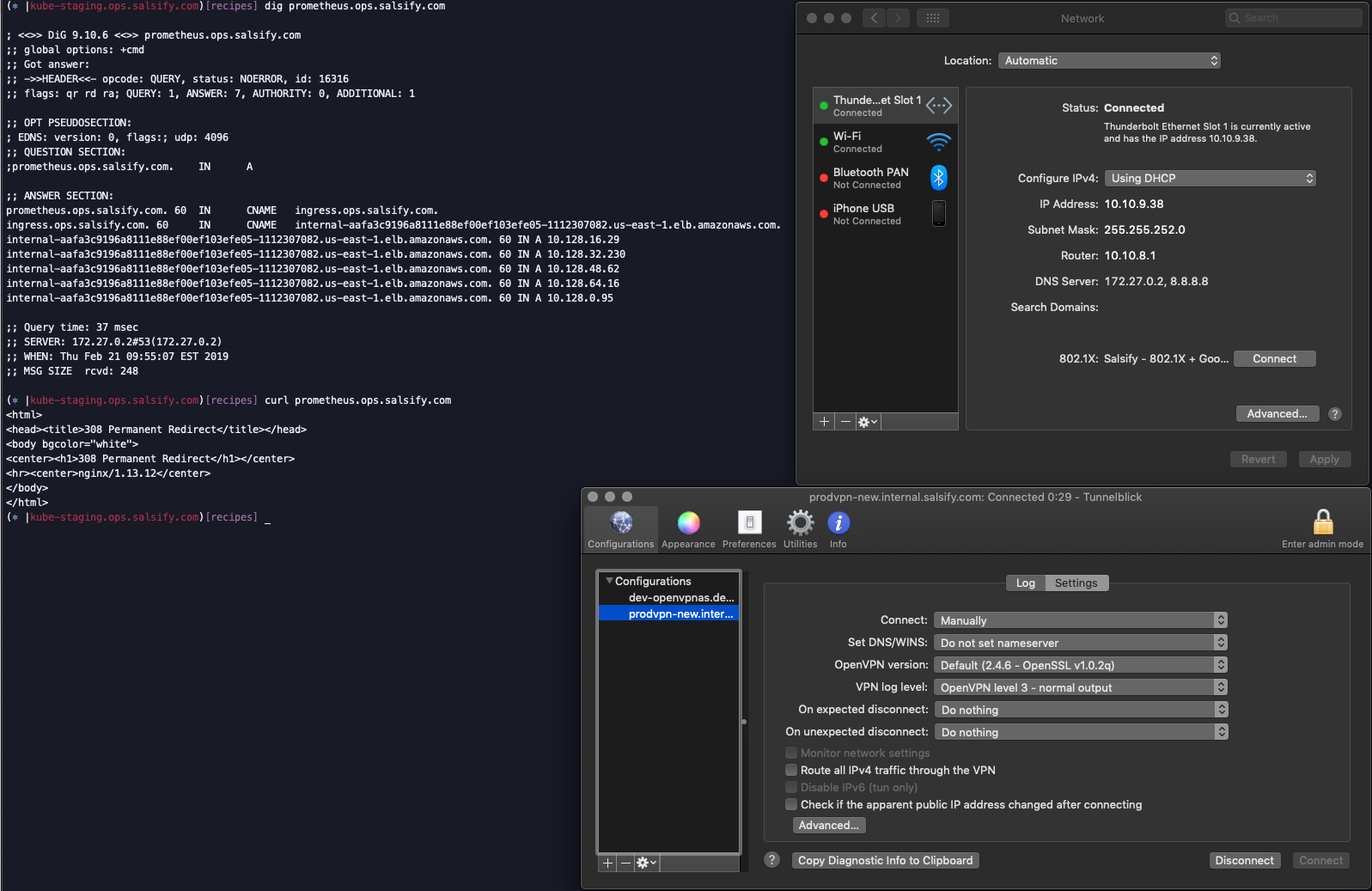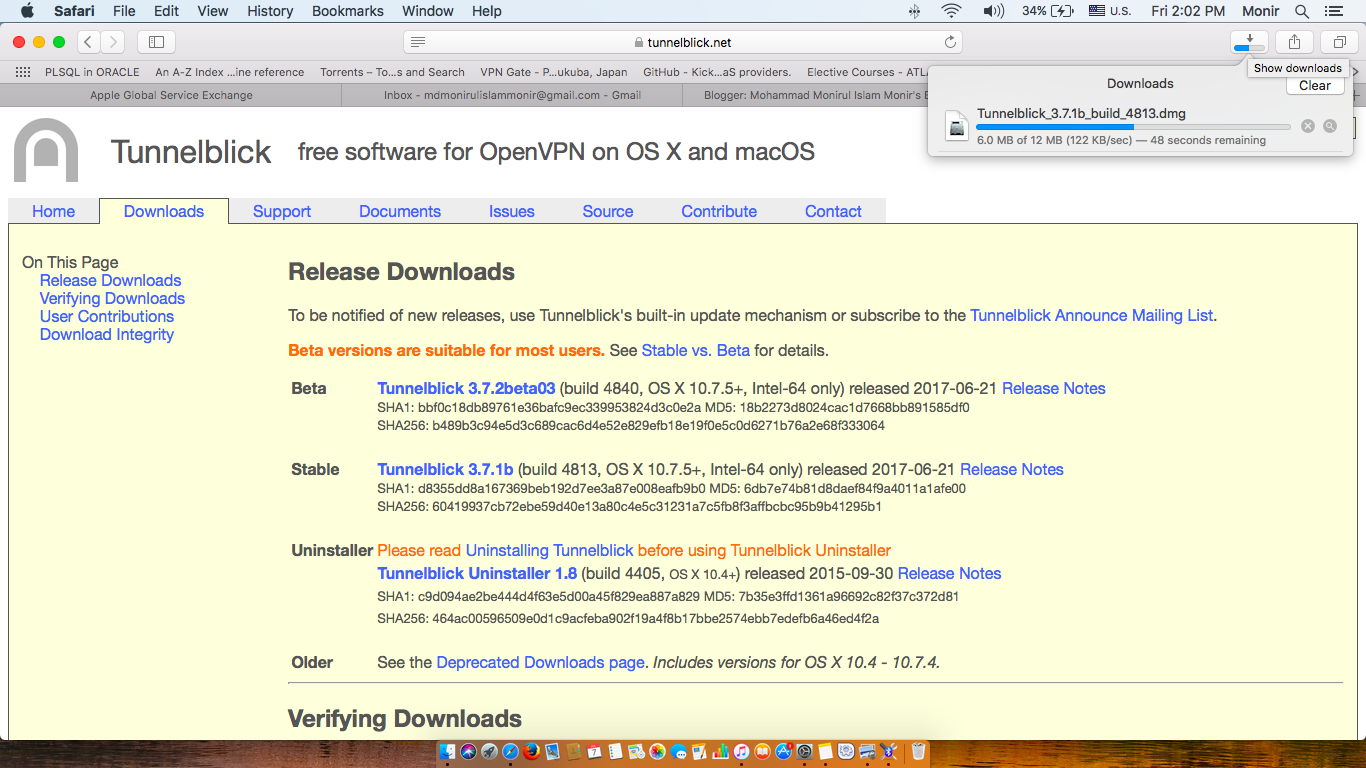

Set your system DNS to use a public DNS that you wish to use.
Tunnelblick vpn address changes how to#
Save the file, and then copy it back to C:\Program Files\OpenVPN\config\ or C:\Program Files(x86)\OpenVPN\config\įollow the SOCKS5 guide for how to configure your clients that should go out via the VPN. Windows using OpenVPNĬopy mullvad_xx.ovpn from C:\Program Files\OpenVPN\config\ or C:\Program Files(x86)\OpenVPN\config\ to the desktop, then edit it to add the following: route-nopull Linux using OpenVPNĮdit /etc/openvpn/mullvad_xx.conf and add route-nopullįollow the SOCKS5 guide guide for how to configure your clients that should go out via the VPN. Warning: Firefox does leak DNS requests outside the SOCKS5 proxy even if you have remote DNS enabled, make sure you have set your system to use a DNS that that you are comfortable to leak queries to. You will use SOCKS5 proxies for the programs that you want to go out via the VPN connection. Tunnelblick on macOS Option 1: How to route everything outside of the VPN by default Prerequisitesįirst you need to have set up OpenVPN in your operating system. This guide explains how to set up split tunneling so that everything goes outside of the VPN tunnel by default, or so that everything goes inside the VPN tunnel by default. The term "split tunneling" is used to describe when you want some of your programs to use the VPN while allowing the rest of your traffic to travel via your regular Internet connection.

If you are using the Mullvad VPN app, then please instead see the guide Split tunneling with the Mullvad app (for Android, Linux and Windows).


 0 kommentar(er)
0 kommentar(er)
